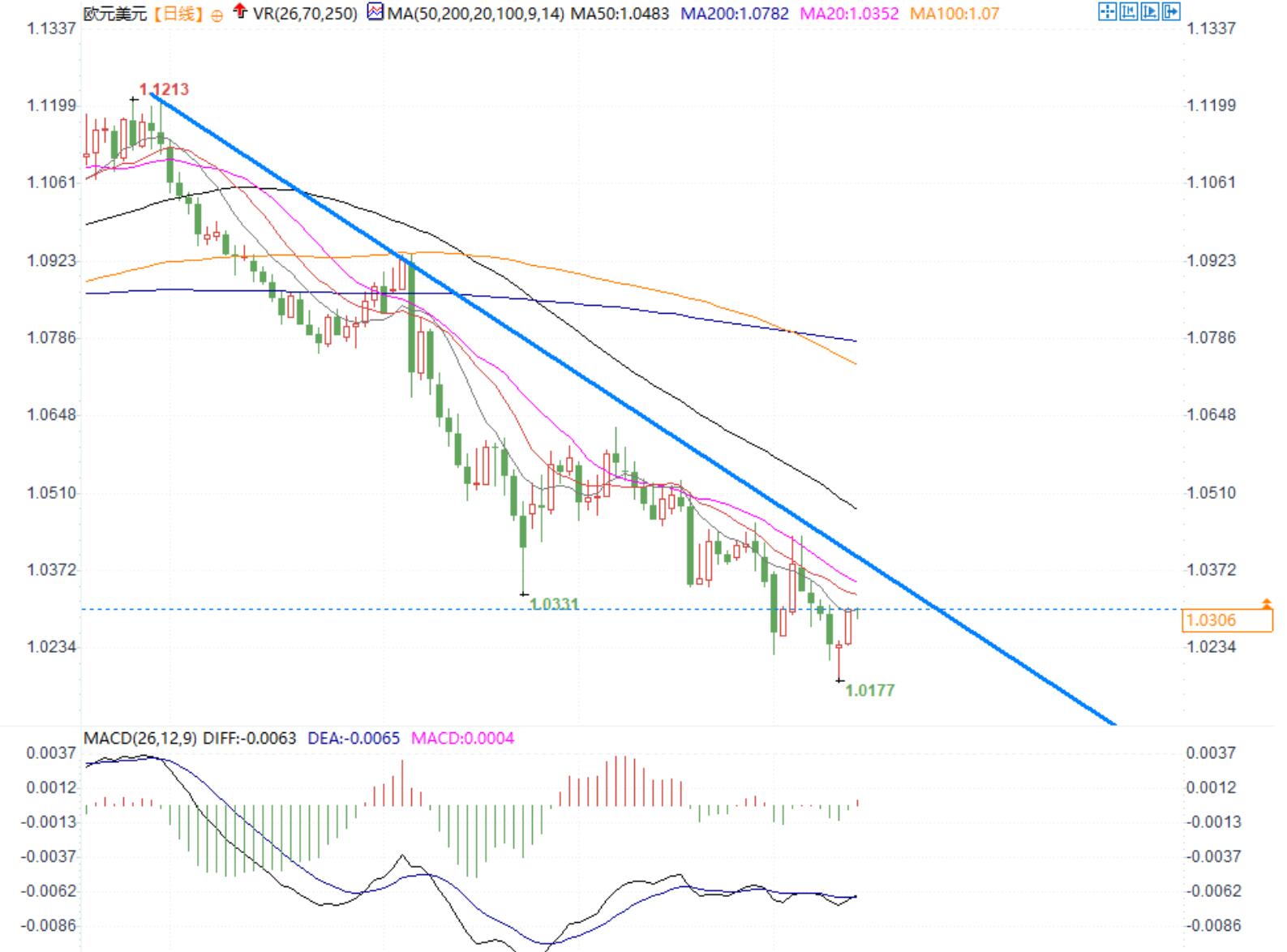Forex Trading Analysis: Can EUR/USD Overcome the Resistance of 1.0353?
The EUR/USD has been continuously declining recently due to factors such as the strong US dollar, rising US bond yields, and weak eurozone economy. The market is paying attention to the US CPI data, which may affect the trend of the US dollar and exchange rate. On a technical level, the euro/dollar is approaching key support, or may rebound in the short term due to oversold status and profit taking. Attention should be paid to breaking through resistance levels such as 1.0312, 1.0353, and 1.0438. But if the rebound fails, it may retest the low point of 1.0178.
Fundamental analysis
On Wednesday (January 15th) during the European trading session, the euro/dollar fluctuated around 1.03. Over the past four months, the euro/dollar exchange rate has continued to decline, and on Monday it fell to a new 52 week low. The primary factor leading to this bearish trend is the strong performance of the US dollar. The strength of the US dollar stems from several key economic factors:
Strong US economic data: The outstanding performance of the US labor market data, coupled with increased expectations of sustained inflationary pressures, further boosted the attractiveness of the US dollar. Analysts believe that the market may be more inclined to hold US dollar assets. At the same time, weak economic data in the eurozone further strengthened the strength of the US dollar.
US bond yields rise: The continuous rise in US bond yields has attracted a large amount of capital into the US market. With the increase of yield, the market is more inclined to choose US treasury bond bonds with higher yield than assets with higher risk, such as euros. This type of capital flow directly exerts downward pressure on the euro/dollar exchange rate.
Global Bond Yield Dynamics and Inflation Pressure: Globally, bond yields have generally increased due to the resilience of US economic data and continued inflationary pressures. This makes fixed income investments (such as bonds) more attractive compared to risky assets. And the euro is more sensitive to global yield fluctuations, which further exacerbates the bearish trend of the euro/dollar.
Future Focus: Looking ahead, market participants are closely monitoring the release of the US Consumer Price Index (CPI) data on Wednesday, which may provide more clues for inflation trends and have a significant impact on the direction of the US dollar and the euro/dollar exchange rate.
Technical analyst interpretation:
Potential rebound opportunities in bearish trends: Despite the recent weak performance of the Euro/USD, from a technical perspective, the exchange rate is approaching key support levels and may rebound in the short term.
The rebound triggered by profit taking: After a long period of downtrend, the market may enter an oversold state, and some short position traders may choose to take profits. This move may drive a short-term rebound in the EUR/USD exchange rate as traders adjust their positions.
The possibility of a weak US dollar: If the US CPI data released this week falls short of expectations or if inflationary pressures ease, the US dollar may weaken. In addition, if the Federal Reserve shows a more dovish stance or if market expectations for future interest rate hikes change, the US dollar may also come under pressure. This will provide support for the euro/dollar.
The possibility of improved economic data in the eurozone: If the economic data released by the eurozone is better than expected, such as strong GDP growth or signs of upward inflation, the euro may strengthen as a result. In addition, if the European Central Bank sends a more hawkish signal indicating its readiness to take action to address inflationary pressures, this will further support the euro/dollar.
Market Position Status: If the market's position in EUR/USD is too bearish, it may trigger a "short covering" market, where traders push up prices due to stop loss or liquidation, leading to a rapid short-term rise in the exchange rate.
Key technical level
1.0312 (Friday high): If the price breaks through this level, it may further test the 1.0353 level where the 20 day moving average is located.

1.0353 (20 day moving average): This position is a key resistance zone in the short term. If the euro/dollar can break through this level, it may further explore 1.0438 (the highest point of the month).
1.0438 (monthly high): If the price successfully breaks through this level, it will indicate that the rebound trend of the exchange rate has been continued.
Risk factor: Although there may be a rebound in the short term, if the euro/dollar fails to effectively break through the resistance level mentioned above, it may once again bear downward pressure, and the price may test the low point of 1.0178 again, or even further decline.
conclusion
Overall, the euro/dollar may be at a turning point. Although the current exchange rate continues to decline, with market profit taking, potential weakness of the US dollar, and possible improvement in Eurozone economic data, there may be a short-term rebound in the EUR/USD exchange rate. If the rebound is established, attention should be paid to the breakthrough of key resistance levels such as 1.0312, 1.0353, and 1.0438. However, if the upward momentum is not maintained, the exchange rate may still come under pressure again.
Tips:This page came from Internet, which is not standing for FXCUE opinions of this website.
Statement:Contact us if the content violates the law or your rights
